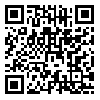BibTeX | RIS | EndNote | Medlars | ProCite | Reference Manager | RefWorks
Send citation to:
URL: http://irj.uswr.ac.ir/article-1-261-en.html
2- University of Social Welfare and Rehabilitation Sciences, Tehran, Iran.
3- Semnan University of Medical Sciences, Semnan, Iran.
4- Tehran Central Brach, Islammic Azad University, Tehran, Iran.
Objectives: The spontaneous language sample analysis is an important part of the language assessment protocol. Language samples give us useful information about how children use language in the natural situations of daily life. The purpose of this study was to compare Conversation, Freeplay, and narrative speech in aspects of Mean Length of Utterance (MLU), Type-token ratio (TTR), and the number of utterances.
Methods: By cluster sampling method, a total of 30 Semnanian five-year-old boys with normal speech and language development were selected from the active kindergartens in Semnan city. Conversation, Freeplay, and narrative speech were three applied language sample elicitation methods to obtain 15 minutes of children’s spontaneous language samples. Means for MLU, TTR, and the number of utterances are analyzed by dependent ANOVA.
Results: The result showed no significant difference in number of elicited utterances among these three language sampling methods. Narrative speech elicited longer MLU than freeplay and conversation, and compared to freeplay and narrative speech, conversation elicited higher TTR.
Discussion: Results suggest that in the clinical assessment of the Persian-language children, it is better to use narrative speech to elicit longer MLU and to use conversation to elicit higher TTR.
Received: 2011/07/2 | Accepted: 2011/08/12 | Published: 2011/10/1





